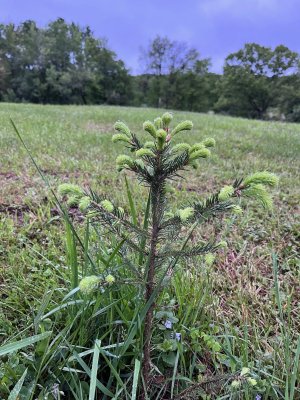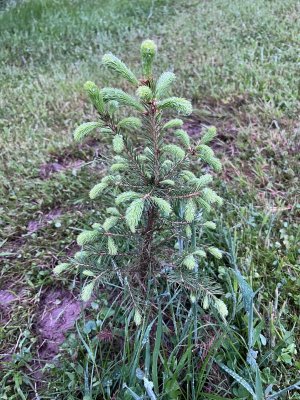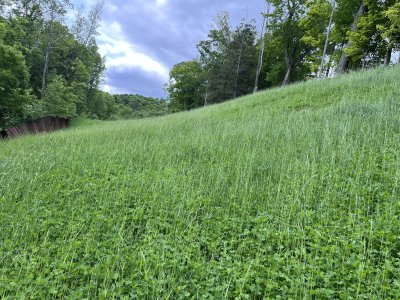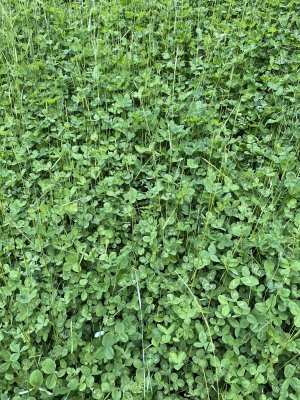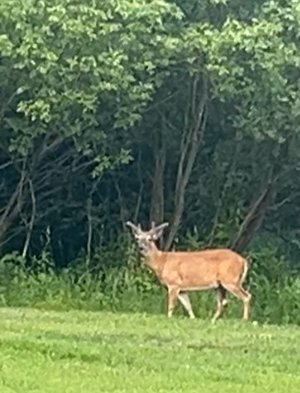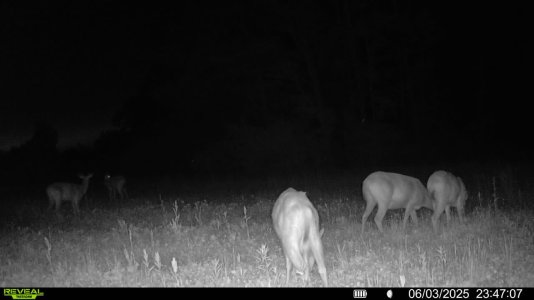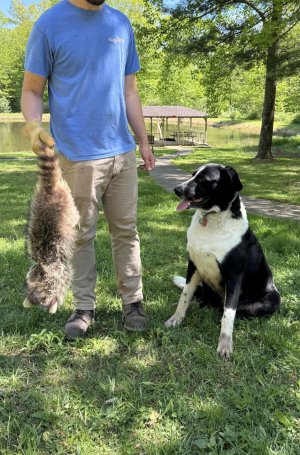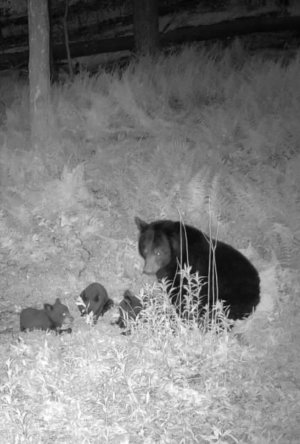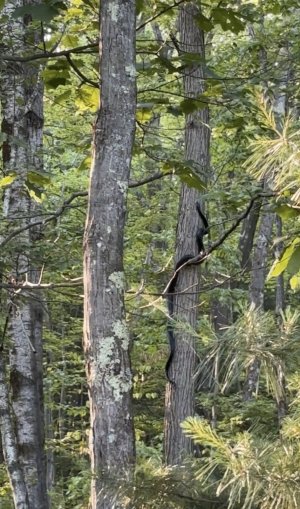Was walking the woods moving some cameras and scouting a little behind the house this weekend. My property (and the entire surrounding region) is struggling with invasives currently, particularly autumn olive, barberry, and Japanese stilt grass. Before I purchased the land, a portion of it was enrolled in a DCNR invasives control project which kicked off this year. I verbally granted them permission to continue on with the project on my property after the sale.
This spring, they basal sprayed the autumn olive and barberry and the intent is to come back in July to treat the stilt grass. Last I was told, they intend to some in and use gly to spray the mats of stilt grass before it seeds out with intent to begin to get it under control. However, I am 100% certain (due to my own experience) that it is a very short term solution, it will be back in months. I have concerns that spraying essentially the entire understory of my property with presumably hundreds of gallons of nonspecific herbicide will do as much (maybe more) damage than leaving it untreated. The property is quite hilly & I’m already fighting erosion issues with the increasingly wet summers we’ve been having in recent years. Tons of washout and flooding which is already taking a significant toll on the property. Plus, the gly is going to knock back whatever native species are attempting to push through the stilt grasses now.
I’ve attached some photos below that I took. You can see the dead autumn olive and barberry. My concern is 1.) loss of cover and habitat – the woods is already looking much more “sterile” as we lost a good portion of understory (I know, they’re invasive but it did provide lots of cover in bedding areas), and 2.) It is opening up a huge opportunity for the stilt grass to continue to spread & I have severe doubts on the likelihood of success on the stilt grass management as proposed. The conservation officer I spoke with said there is allegedly 7+ year seed bank under the stilt grass, a one time spraying of generic herbicide isn’t going to do anything other than a temporary setback and potentially killing off native species and opening the door for the more aggressive stilt grass to advance. Below I have a couple pictures documenting this:

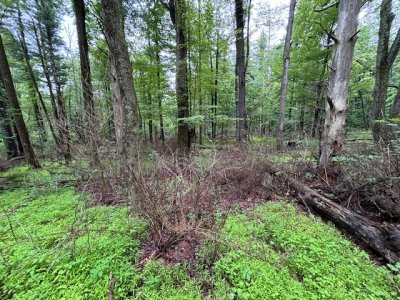
And here are two pictures of areas just downhill on the same patch of woods that isn't enrolled, hasn't been treated.
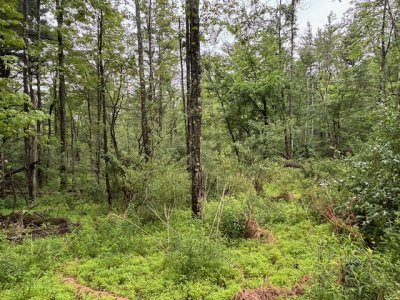
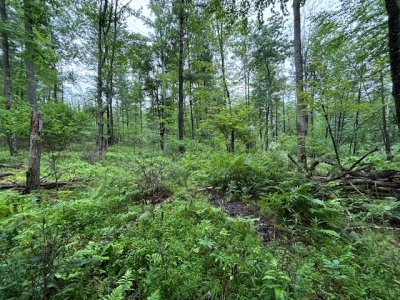
There are areas that are better and worse, but these photos give a general sense of the average state of affairs in these areas. I've actually been losing mature hardwoods due to erosion, flooding, etc from some of the changes going on. I'm trying to consider changes I can make myself to help push this section of woods the right direction. Perhaps a big hinge cutting project next spring or consult with a forester on a select cut logging. I'm doubtful that fire will be in the future for various reasons, but I would be interested in it if possible. My one concern with altering the timber stand is that nearly ANY open canopy gets gobbled up by stilt grass far faster than the natives can set foot. Hinge cutting may help with that by keeping some shade on the ground.
Sorry for the long winded post but if anyone has any recommendations or thoughts I'd love to hear them.


